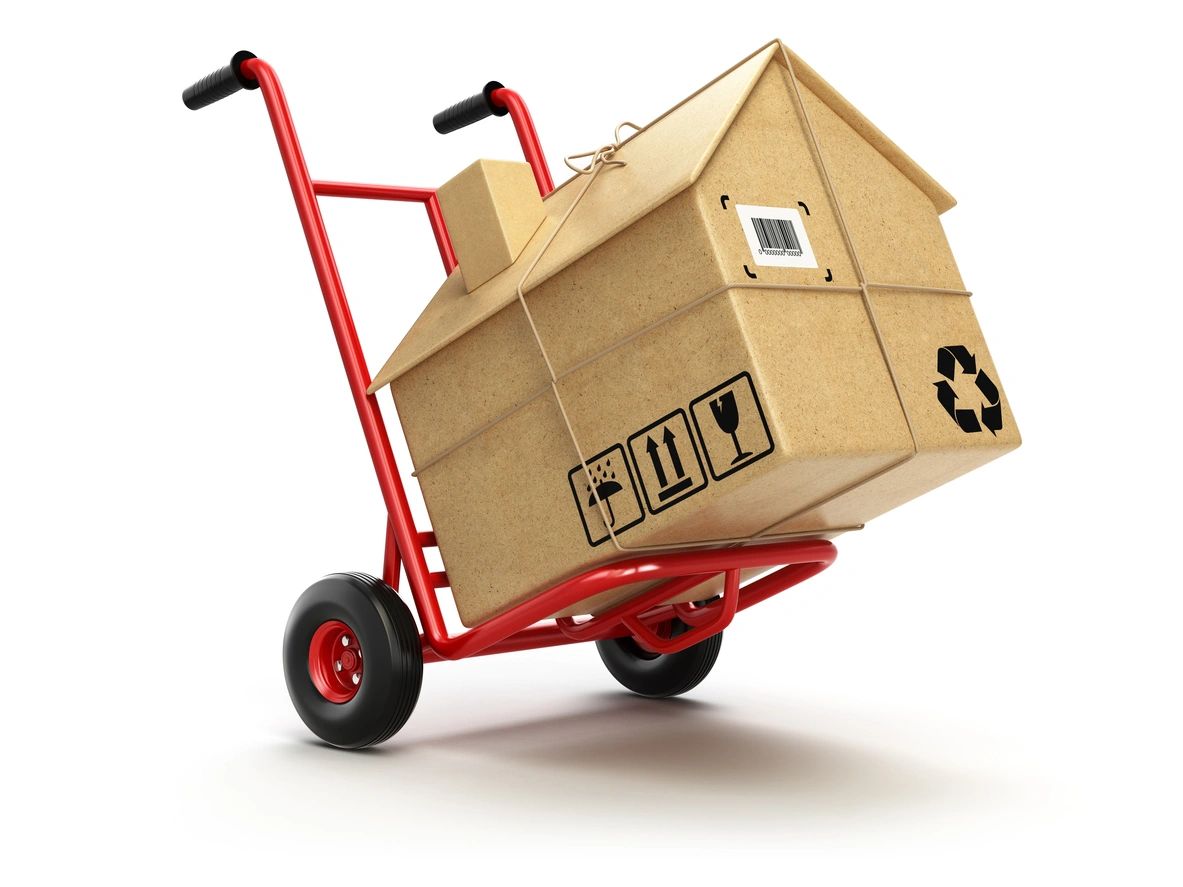- LONG DISTANCE MOVING SERVICE OPTIONS
- HOW CHARGES FOR PROFESSIONAL MOVING SERVICES ARE CALCULATED
- COMMON REASONS THE FINAL PRICE INCREASES ABOVE THE ORIGINAL ESTIMATE
- HOW TO GET AN ACCURATE ESTIMATE

The long-distance interstate moving industry is made up of professional, hard-working, honest companies, estimators, drivers, and movers who provide reliable services. Most interstate long-distance moves will be completed quickly and efficiently to the satisfaction of the consumer.
However, as with any industry, there is always a chance of service failures, damaged or missing items, overcharges, and falling prey to unscrupulous and unlicensed individuals masquerading as licensed professional movers. The best way for a consumer shipper to prevent fraud, protect their property, and enforce their rights is to be an informed consumer who researches and hires a reputable professional moving company.
This section is designed to help consumers research and hire a professional long-distance interstate mover. Review the information in this section, do your homework before hiring a mover, and then you can benefit from the services and experience of a reputable and reliable professional moving company.
"HOW CONSUMERS CAN AVOID HIDDEN CHARGES FROM MOVING COMPANIES."
Avoid unexpected hidden charges from a long-distance moving company by understanding the secrets of how movers calculate their prices.
Long-distance interstate moving is stressful and unpleasant even under the best of circumstances. Moving is an expensive undertaking and generally, you will receive the level of service you pay for. If you hire a nationally known company you will pay top dollar but will typically receive top-of-the-line service. On the other hand, if you have friends who are willing to work for free, are capable, and not afraid of exhausting work, then you could rent a truck, pack your own property, have help with the loading and driving, and save thousands of dollars.
For people who do not want to spend top dollar on a nationally known moving company and can't or don't want to do a self-move, there are good alternatives. To save money and avoid the hard work consumers can hire a smaller independent moving company, use a broker service, or hire a "you load - they drive" container service. These options are great alternatives to expensive top-of-the-line movers or completely do-it-yourself moves. However, consumers using these cost-saving services need to have realistic expectations of what is and is not included in the price.
Between the stress of packing, planning, and dealing with the challenges of being uprooted, the last thing consumers need is unexpected hidden charges increasing the cost of the move. To help avoid unexpected charges, a consumer should first understand the types of moving company options available and the cost associated with each.
Generally, there are four categories of long-distance moving options. Each category has pros and cons, includes different services, and ranges widely in costs. To help manage the final cost of the move a consumer must understand what is included in the service they are purchasing and how charges are calculated.
LONG-DISTANCE MOVING SERVICE OPTIONS:
Option 1 - Full-service all-inclusive moving from a nationally known major van line:
The top of the line service in the moving industry is a full-service all-inclusive move performed by a nationally known major van line. Generally, the major van lines perform quality services with the highest degree of professionalism and will charge a premium for their services.
They will send a representative to your home to provide an estimate, send a team of movers in matching uniforms to do all the packing in your home, transport your goods in shiny new trucks, provide full insurance coverage for any loss or damages, and deliver quickly on a guaranteed date. The nationally known major van line is a good choice for consumers who don't want to lift a finger during their move, receive white glove services, and don't mind paying a premium price.
Option 2 - Regional independent moving company and/or moving broker offering á la carte services at discounted pricing:
A great alternative to hiring a nationally known major van line is to use the services of a moving broker working with a network of smaller independent regional moving companies.
Many of the regional independent moving companies in the broker's network offer á la carte moving services. Typically moving brokers provide written estimates based upon a specific list of á la carte moving services and items to be moved. Consumers can choose to save money by selecting the service options they want. For example, a consumer may wish to choose to perform their own packing or select the longer ground delivery window instead of an expedited or guaranteed delivery service option. Services are generally offered at a lower cost since the consumer may choose to do some of the work themselves, the broker searches its network for a moving company who has availability on that date, and the property would be consolidated with other shipments on the same truck for transport.
Using the services of a regional independent moving company from a moving broker's network can result in great cost savings. However, consumers need to be aware that prices are quoted based upon a specific list of services. Any deviation or additions to the services ordered can result in price increases - sometimes dramatic price increases. For example, a price quote could be issued based upon moving 150 specified items with no packing services included. If however, on the day the mover arrives for the pick-up the customer adds 30 additional boxes to be moved and also needs the movers to finish some of the packings the price will increase. Consumers hiring a regional independent moving company from a broker's network can save a great deal of money, but should have a very clear understanding of what services are and are not included in the price. Any extra service or additional items to be moved that were not included on the moving quote will increase the final price.
Option 3 - Self-pack and load - they drive container service:
Consumers wishing to do all the packing and loading themselves can hire a "container" service company. Generally, companies offering "container" services will drop off a large container at your home. It is up to you to perform all the packing and loading of the container yourself. Once you have completed the packing and loading the company will pick up the container and deliver it to your new home where you will unload and unpack. Container services are good alternatives for people who do not need any assistance with packing or loading their property. Container service companies charge based upon the size of the container rented, the distance the container is transported, and the days you keep the container in your possession.
Consumers need to be aware that container services may not offer insurance coverage for any damage or breakage of the property moved since it is self-paced. Additionally, container moving services for long-distance moves are not regulated by the government and therefore a consumer is not protected by the moving industry consumer protection laws - such as requirements for licensing cargo insurance coverage, and price increase limits.
Option 4 - Complete do it yourself rent-a-truck moving:
The least expensive option in moving is a do-it-yourself move. Consumers choosing this option will rent a truck from a rental company and do all the packing, loading, and driving themselves. Keeping in mind that moving is excruciatingly hard work, this is a good option if you have friends and family who can help and you don't mind taking on all the responsibility and stress for completing the move.
Costs associated with a self-service rent a truck move includes the costs of the rental truck, per mile charge, fuel charge, packing supplies, your time in driving, and in some cases pizza and beer for your "volunteers."
HOW CHARGES FOR PROFESSIONAL MOVING SERVICES ARE CALCULATED
Of the four options listed the two with the biggest variations in pricing are the full service moves through major van lines and the á la carte moving services offered from regional independent movers in a broker's network.
Generally, interstate moves performed by the nationally known major van lines or the regional independent moving companies are charged based on the weight of the property being transported or the amount of space (cubic feet) the property occupies on the truck, the distance traveled, time of year the move takes place, and the service options ordered.
If the charges are based upon weight make certain that you are provided with official certified scale certificates verifying the accuracy of the weight. After the goods have been packed and loaded the truck will be weighed to determine the "line-haul" charges. Only after the truck and property have been weighed and services performed can the actual final charges be determined.
Since the estimates are not typically guaranteed and the final price cannot be determined until services have been performed, the final actual charges could be higher or lower than the estimate. Generally, you are only required to pay up to the amount of the last estimate issued to receive your property. Any charges above the last estimate issued are due thirty days after delivery.
Also, it is standard practice for a moving company to offer extra services at an additional charge. An example of extra services not included in the weight or "line-haul" charges are for the use of expedited guaranteed delivery service, stairs, shuttle, long carry, elevator, packing and labor, storage, appliance services, etc. You must have a clear understanding of what services are included in your estimate and what services will be charged at an additional rate.
COMMON REASONS THE FINAL PRICE INCREASES ABOVE THE ORIGINAL ESTIMATE
Perhaps the biggest complaint consumers have about moving companies is that the final price of the move exceeded the original estimate. As explained above charges for moving services are based on many factors which could be unknown before the services have been completed.
In some cases it can be difficult to estimate the exact weight of all the property in a house, or if there will be special services required at the delivery destination.
A professional moving company should be able to give a reasonably accurate estimate. However, all estimates are based on the information provided by the consumer. In some cases, a consumer may not know if the extra services, such as stairs or long carry, will be required to complete the delivery at the destination. There are many legitimate reasons the final changes for a move could end up higher than the original estimate given.
Consumers need to be made aware in advance of the prices for extra services and be prepared to pay more money than originally anticipated if those services are required. Consider the following list of common reasons the final cost of a move would increase above the estimate.
✓ After originally anticipating doing their own packing, the consumer runs out of time before the pick-up date and needs the mover to perform last-minute packing services.
✓ The estimator miscalculates the weight of certain items of furniture and ends up issuing an inaccurate estimate.
✓ A well-intentioned conscientious consumer may request a moving estimate a month or two before their actual move date. Since the estimate was requested well in advance, the consumer did not have all their boxes packed when the estimator inquires "how many boxes will you be shipping?" It is difficult to accurately estimate the number of boxes that will be used to pack clothes, dishes, books, pantry items, garage items, and an entire household of miscellaneous items - when nothing has been packed.
✓ In the process of downsizing a customer may request an estimate based upon a specific list of items to be moved with the anticipation that they will sell, donate, or discard some of their current property. If the customer fails to sell, donate, or discard the property the size and cost of the move are increased.
✓ Under the stress of planning a cross-country move the consumer may simply forget to inform the estimator of seldom-used items located in an attic, storage shed, or basement.
✓ In some cases a consumer may fail to inform the estimator of certain items to be moved in hope that they can lock in a lower price - not realizing that the final price would be based upon the weight of all the items moved (disclosed in advance or not) and services performed.
✓ The customer may not be familiar with the specific characteristics of the destination home resulting in extra unanticipated charges - i.e.
Shuttle charge: The use of a smaller truck to provide service to homes not accessible to the mover's normal 18 wheeler because of limited space or roadway restrictions. For example, delivery into downtown San Francisco.
Long Carry charge: A charge for carrying articles excessive distances between the mover's vehicle and the customer's home. For example, a 100-yard walkway from the street to the front door of the home.
Stairs: A charge for carrying items up or down flights of stairs. For example, delivery to the 5th floor of an apartment building with no functioning elevator.
Unanticipated storage: Temporary warehouse storage of the shipment pending further transportation. For example, if the consumer's new home isn't quite ready to occupy.
Rigging, hoisting and lowering: Setting up a rope and pulley system to raise large bulky items through an upper floor window when the item will not fit through the front door. For example, an oversized couch, armoire, or piano up to the second floor of an old Victorian home.
HOW TO GET AN ACCURATE ESTIMATE
Accuracy of estimates is based in large part upon the accuracy of the information the consumer provides the estimator. Whether an estimate is given after an in-home visual inspection of the property or over the phone based upon a consumer's list of items to be moved - the accuracy depends on the information provided.
To help get an accurate estimate consumers to need to fully inform the company of all items that will be moved and the specific services needed. You should always get three written estimates to compare and check a mover's license and references. If you are going to use a professional moving company always make certain to hire a company that is properly licensed and insured. Consider the following list of tips to help ensure the accuracy of an estimate:
✓ Inform the estimator of all items being moved. Don't forget to list the items stored in an attic, storage unit, or garage.
✓ Describe in detail the physical location of the pick-up and delivery locations and inform the estimator if there will be stairs, excessively long walkways, or roadways inaccessible by a tractor-trailer truck.
✓ Inform the estimator if you have any unusually large or bulky items being transported such as oversized pool tables, backyard playground sets, and/or large gym equipment.
✓ Let the estimator know if you need any special packing or wooden crating services for special items such as an antique vase or other large fragile items.
✓ Between the time you receive your initial estimate and the day of the move keep in contact with the estimator and provide updates if you decide to move additional items, change the services ordered, or need the movers to pack your property. Informing the estimator of changes or updates to your move before the day of the pick-up will let you see an updated estimate so you can avoid surprise price increases.
✓ Let the estimator know if you need to order expedited or guaranteed delivery service or if you want the less expensive standard non-guaranteed ground transport service.
Moving is a difficult, unpleasant, and expensive process. Consumers can save money and help reduce stress by selecting the right type of service for their move and having realistic expectations of what is and is not included in the price of the moving service. Make certain to carefully review the details of the moving estimate and contract.
Moving Claims is not an insurance company and the employees of Moving Claims are not acting as your insurance adjusters. Moving Claims does not practice Insurance laws and does not give legal advice. This site is not intended to create an insurance claim, and by using the Moving Claims websites, no insurance claim will be created with Moving Claims. Instead, you are filing a Household Goods claim with the carrier who moved you via Moving Claims Websites. Moving Claims websites information, as well as any, advice of its employees is not a substitute for the advice of an attorney. The information contained on this website is designed for informational purposes only. Nothing on this website is designed or intended to constitute legal advice. Federal, state, and local laws and regulations governing the moving industry change frequently and may be interpreted differently by different people. If you need specific legal advice you should consult a lawyer directly or a representative from the US DOT.




